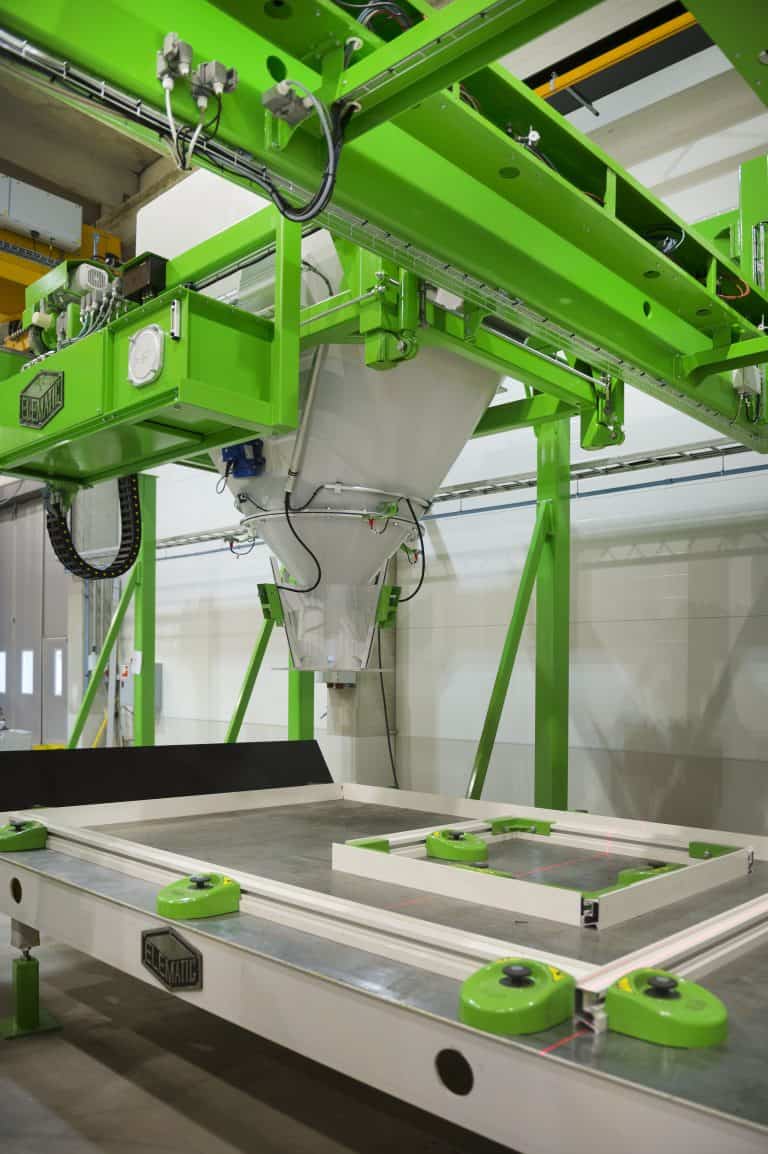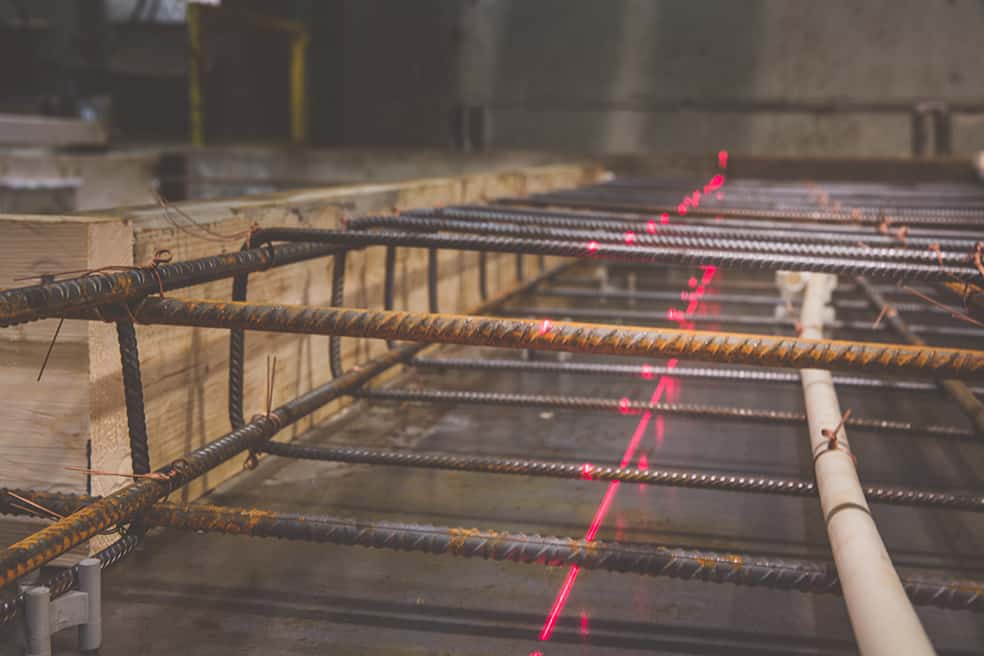Elematic’s new system for automated casting and quality control management is meeting growing demands for quality control and verification in precast production.
“The system scans the casting table using a 3D machine vision system, making sure all of the details are placed correctly: shuttering, reinforcement, lifting hooks, spots for different electric wall sockets or other inserts,” explains Ismo Kallio, Product Director at Elematic.
“This enables our customers to achieve the best possible quality and cost-effectiveness in wall panel casting. When all possible mistakes can be detected before casting, they are easy to correct. The earlier the mistake is found, the cheaper it is – that’s our philosophy.”
In spite of this advanced automation, manual work is still part of most precast production processes. This is why machine vision is staying one step ahead in achieving the best possible results.
“Although production is connected to the building information model, shuttering is usually installed manually before casting. The possibility for human error remains. Automated production data does not ensure accuracy as we cannot be sure how the data is applied by the operator,” says Jouni Sirkka, Product Development Director at Elematic.
Quality for all types of production

Connected to the automatic comcaster, the casting system is best suited to diversified, high capacity wall production with the Elematic EDGE Wall production line. EDGE Wall consists of a manufacturing execution system, automatic machinery, and a table circulation system. The line is particularly suited to producing sandwich panels, cladding panels, solid panels, and solid slabs.
“Cross-checks and measurements play a major role in diversified, high-capacity production. Many different elements and tables are to be tested before the casting, which increases the chance of errors. Automatic scanning thus adds value – especially in production units with high turnover or variable worker expertise,” Sirkka says.However, quality control is also a useful function for smaller-scale production. The scanning system can be detached to become a separate quality control unit for any type of production line.The possibility to collect and save production data also offers new possibilities for other parties, such as regulatory authorities.”
In Europe, quality and safety matters in the precast factories are already controlled by the authorities to ensure safe working environments and high-quality construction. The trend is likely to become more common in other parts of the world, too. In addition to precasters, authorities could benefit from the system,” Kallio envisions.
Right match with technology and know-how
The possibility to utilize the machine vision system in precast production was studied at Elematic a decade ago. Although widely used in many other industries at the time, the technology was not well enough developed to add value to the casting process.
Tests were restarted in 2015 with good results: the required accuracy was achieved. A partner with top know-how in machine vision systems was also found.
“Precast production with grey concrete is a very challenging application area for machine vision. It is highly demanding for the technology,” Sirkka says.
The right match of technology, know-how, and application was followed by intense development and a testing period.
“Various aspects of machine vision are under examination. There are numerous possibilities to utilize the automated scanning system in precast production,” Kallio says.

